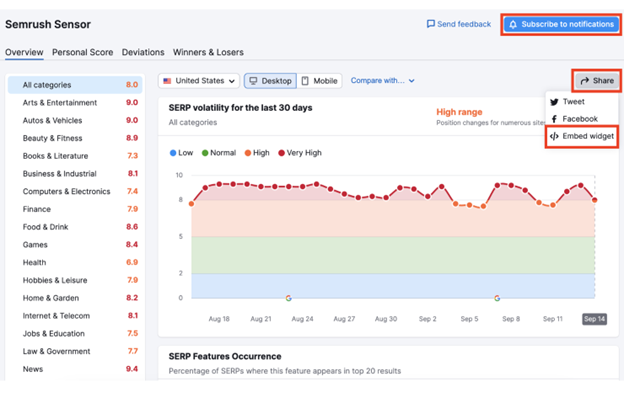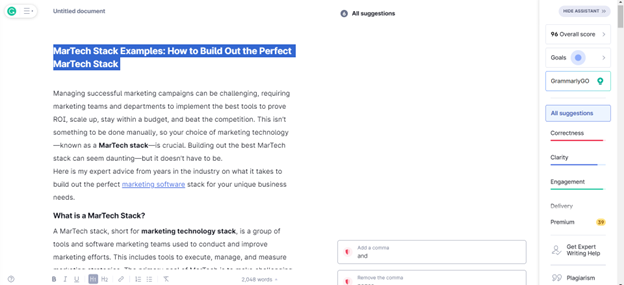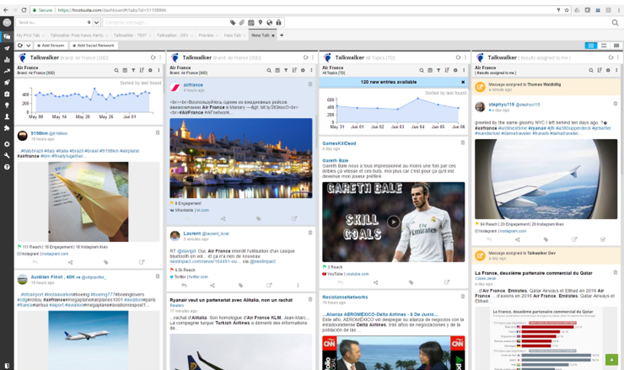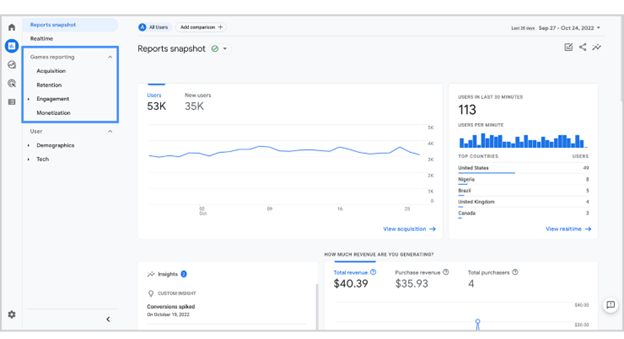Managing successful marketing campaigns can be challenging, requiring marketing teams and departments to implement the best tools to prove ROI, scale up, stay within a budget, and beat the competition. This isn’t something to be done manually, so your choice of marketing technology—known as a MarTech stack—is crucial. Building out the best MarTech stack can seem daunting—but it doesn’t have to be.
Here is my expert advice from years in the industry on what it takes to build out the perfect marketing software stack for your unique business needs.
What Is A MarTech Stack?
A MarTech stack, short for marketing technology stack, is a group of tools and software marketing teams used to conduct and improve marketing efforts. Different from AdTech, this includes tools to execute, manage, and measure marketing strategies. The primary goal of MarTech is to make challenging processes easier, measure the impact of marketing campaigns, and increase efficient spending. The tools that comprise a MarTech stack vary from business to business and range from legacy software to cloud-based SaaS (software-as-a-service) tools. Each tool can handle various marketing aspects, but they work together to accomplish common goals.
Types Of MarTech Tools
When building your MarTech stack, these are the types of tools you will want to add:
- Marketing Planning Software: Everything you need for brainstorming, visualizing, and tracking campaigns. You'll find calendars, to-do lists, Kanban charts, and tons of collaboration and coordination tools, too. This will be the hub where you plot project progress from start to finish.
- Content Management Systems (CMS): Content is king in today’s marketing environment, and your content management system will help you power your content creation and dissemination. These tools help you create, edit, and publish multiple content forms on your site.
- Social Media Management Tools: These platforms will help your team monitor social media conversations, curate content, and schedule posts. They can be the social media networks themselves (Facebook, TikTok) or third-party tools explicitly focusing on social media management (Hootsuite, Loomly).
- Email Marketing Platforms: Your email marketing platform sends and tracks email campaigns, manages subscriber lists and offers campaign performance analytics and reporting. You can use email marketing tools to send newsletters to your entire list or segment subscribers to send tailored emails to customers based on their purchases, emails they opened and interacted with, and more.
- SMS Marketing Software: A tool or platform designed to facilitate and automate the process of sending text messages (SMS) to a targeted group of recipients for marketing and communication purposes. SMS marketing has become increasingly popular due to its effectiveness in delivering messages directly to individuals' mobile phones, which are almost always within arm's reach.
- Customer Relationship Management (CRM) Systems: Businesses use CRM software to build and manage customer relationships, store lifecycle information for prospective and current customers, and link communications between marketing and sales teams. CRMs also give companies an overview of customer activities for sales, customer service, and marketing teams.
- Search Engine Optimization (SEO) Tools: SEO platforms can help improve search engine rankings and increase organic traffic. They can offer a range of insights, such as which keywords are closely related to your business, relevant backlinks, how to enhance your website pages, and site performance.
- Pay-Per-Click (PPC) Management Tools: PPC platforms monitor and optimize the performance of pay-per-click strategies and automate the most time-consuming tasks or processes that involve large data volumes. The algorithms behind these platforms can help strategic PPC marketers leverage insights to improve ad campaign performance.
- Marketing Automation Platforms: There are many marketing aspects that end in next-level results but don’t require manual, hands-on work. Marketing automation platforms can handle tasks such as sending post-purchase emails, customer follow-ups, SMS campaigns, and more. They can also be used to connect multiple tools together; for example, connecting your social media and website channels into a singular marketing data dashboard and pulling weekly reports to auto-send to key shareholders.
- Marketing Intelligence Software: When building a MarTech stack, including analytics and intelligence tools is essential. These platforms are the only way to understand how your campaigns are performing and give you an idea of how you can improve.
- Customer Experience (CX) Tools: 32% of customers say they’ll walk away from brands after one unpleasant encounter—using CX tools as a part of your MarTech stack can help your team collect customer feedback data before they decide to leave. They optimize marketing, sales, and customer retention by managing the customer journey and creating positive experiences.
- Personalization Engines: A personalization engine will collect and analyze customer data and behavior, allowing you to use this information to customize customers’ experiences. Personalization engines can help increase conversion rates, optimize campaigns, and enhance customer satisfaction.
- Chatbots and Conversational Marketing Tools: Chatbots and conversational marketing software use artificial intelligence that speaks with customers through chat windows on your website. The AI has conversations based on the information it has about the visitor. It can help quickly solve obvious queries (like “What is your return policy”) that don’t otherwise need a human agent to interfere.
- Video Marketing Tools: These platforms enable marketing teams to create on-brand videos they need to make their business stand out online. Using videos as a part of a marketing strategy can increase conversions and improve visitors’ experiences. They can be anything from product training videos, social media content, or even on-demand webinars.
- Event Management and Webinar Tools: Utilizing event management and webinar tools will simplify the planning, organization, and execution process involved when planning online events. These platforms can help your team efficiently manage tasks and logistics, participant communications, and enhance future events via event data.
- Affiliate Marketing Tools: Your MarTech stack might include affiliate marketing tools to help your team promote products or services made by other retailers or advertisers, manage payouts, and track affiliate links. Using affiliate marketing tools can also help you discover who your audience is and what they like, allowing you to promote more relevant products and services.
You Might Also Like: 15 Emerging MarTech Startups To Watch In 2025
My Step-By-Step MarTech Stack Example
MarTech can be used for almost anything related to marketing, and no matter how experienced you are, you might be surprised by the variety of digital marketing platforms out there. The following are some examples of what tools you can implement to handle various aspects of your marketing department.

Step 1: Plan

Planning tools in a MarTech stack refer to specialized software or applications designed to streamline and optimize various aspects of marketing strategy and campaign management. These tools assist marketing professionals in tasks such as market research, audience segmentation, content planning, budget allocation, and timeline scheduling.
By providing data-driven insights, visualization features, and collaborative functionalities, planning tools empower marketing teams to make informed decisions, enhance efficiency, and ensure that their campaigns align with overall business goals. Whether it's tracking customer behavior, analyzing market trends, or managing resources, these tools play a crucial role in orchestrating successful marketing campaigns within a digital landscape.
Tools you may use: Google Keyword Planner, Semrush, Asana, and/or Trello.
Step 2: Create

Creation tools in a MarTech stack encompass a variety of software applications and platforms designed to facilitate the development of engaging and compelling marketing content. These tools can include graphic design software, video editing programs, content management systems, and even AI-powered platforms that generate creative assets.
Creation tools enable marketers to produce visually appealing advertisements, social media posts, email campaigns, videos, and other multimedia content tailored to their target audience. By providing user-friendly interfaces and customizable templates, these tools empower marketing teams to bring their creative visions to life efficiently, ensuring brand consistency and enhancing customer engagement across various digital platforms.
Tools you may use: Canva, Grammarly, TikTok Video Editor, and/or ChatGPT.
Step 3: Share

Sharing tools in a MarTech stack refer to software applications and platforms that enable marketers to distribute their content and messages across multiple channels and networks seamlessly. These tools encompass social media management platforms, email marketing software, and collaboration tools that facilitate the sharing of marketing materials with specific target audiences.
Sharing tools often come with features such as scheduling, tracking, and analytics, allowing marketers to optimize the timing and content of their messages for maximum impact. They play a crucial role in amplifying a brand's reach, increasing brand awareness, and fostering meaningful interactions with the audience by ensuring that the right content is delivered to the right people at the right time, driving engagement and conversions.
Tools you may use: Hootsuite, Meta Business Manager, Mailchimp, and/or Medium.
Step 4: Nurture

Customer nurturing tools in a MarTech stack are specialized applications designed to build and maintain strong relationships with potential and existing customers throughout their buying journey. These tools encompass customer relationship management (CRM) systems, marketing automation platforms, and personalized messaging services. Customer nurturing tools enable businesses to track customer interactions, analyze behavior, and deliver tailored content and communications based on individual preferences and actions.
By automating targeted marketing campaigns, sending personalized messages, and providing valuable insights into customer behavior, these tools help businesses engage with their audience on a deeper level, nurture leads, and ultimately, drive conversions and customer loyalty. They are essential for creating personalized and meaningful customer experiences, which are key to building long-lasting relationships and maximizing the lifetime value of customers.
Tools you may use: Pipedrive, Zoho CRM, TextMagic, and/or Helpscout.
Step 5: Report

Reporting tools in a MarTech stack are software applications that facilitate the collection, analysis, and presentation of data related to marketing performance and key metrics. These tools aggregate data from various sources within the marketing ecosystem, such as website analytics, social media platforms, email campaigns, and advertising efforts, and transform this raw data into comprehensive and visually accessible reports.
Reporting tools provide valuable insights into campaign effectiveness, customer behavior, ROI, and other essential metrics, helping marketing professionals make data-driven decisions. By visualizing trends, tracking KPIs (key performance indicators), and measuring the impact of marketing strategies, these tools enable businesses to assess the success of their marketing initiatives, optimize future campaigns, and align their efforts with overarching business goals.
Tools you may use: Google Analytics, DashThis, Whatagraph, and/or Brandwatch.
6 Tips for Building Out Your MarTech Stack
The most effective MarTech stack is one that you can use effectively, meaning simplifying your MarTech stack from the beginning is essential. Every marketing team has unique requirements, so no two tech stacks will be alike—and tailoring your MarTech stack that aligns with your goals, needs, and the size and structure of your business is crucial.
- Identify Needs: To avoid purchasing non-relevant or unnecessary tools, ask which problem areas the MarTech stack you plan to build will need to address. This can include increasing productivity, improving collaboration, reporting automation, scaling efforts, and more.
- Consider Budgets: Unsurprisingly, the MarTech tools you decide to use will come at a cost, ranging from a few dollars a month to thousands. To ensure you’re not overspending, use stages or milestones to set your budget, starting with foundational platforms and working your way to more advanced tools.
- Ensure Good Interaction: Tools with extensive integration capabilities ensure you can easily add, remove, or swap out platforms as the need arises. Integrations allow for free-flowing data exchange between channels, systems, and tools, empowering your team to find patterns and learn.
- Train Teams: The tools in your stack are only as good as the team members using them, making training crucial to your success. Allow your team to have the time to explore the tools in your stack and understand their potential.
- Put Data First: Consider how your potential MarTech stack can help your team become more data-driven, empowering your department to create a competitive advantage for your organization. The right MarTech stack can provide access to high-quality, actionable data to make your business more insight-driven.
- Use All-In-One Solutions: Finding the right balance of tools can be challenging when developing your MarTech stack. Choosing a solution that consolidates the functionality of several tools can reduce operational silos, provide better campaign visibility, accurately set goals and forecasts, and reduce spending.
Conclusion
Thanks to the number of marketing tools available, there’s no need to use complex, time-consuming platforms. The most ideal MarTech stack will simplify, automate, and optimize marketing campaigns, allowing your team to work smarter instead of harder.
With the help of your stack, marketing teams can focus on refining strategies, reaching goals, and measuring performance. To grow better, you can use your MarTech stack to satisfy customers and create excellent experiences rather than forcing your team to focus on managing your software.
Want to learn more about MarTech? Check out our list of the top MarTech conferences to attend. Also, if you need more suggestions regarding tools you can implement in your MarTech stack, sign up for The CMO newsletter and get regular software reviews sent to your inbox.
You Might Also Like: How to Build a MarTech Stack that Scales in 5 Simple Steps


